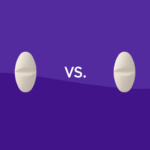Ambien, also known by its generic name zolpidem, is a medication primarily prescribed for the treatment of insomnia, a common sleep disorder. It belongs to a class of drugs called sedative-hypnotics, and its mechanism of action is designed to help individuals fall asleep more easily.
Check Out:
How Does Ambien Work in the Body?
Ambien works by interacting with the brain’s neurotransmitter called gamma-aminobutyric acid (GABA). GABA is a chemical that facilitates communication between nerve cells in the brain. It acts as a calming agent, reducing the activity of the brain cells to promote relaxation and induce sleep.
Ambien enhances the effects of GABA by binding to specific receptors in the brain, intensifying the inhibitory signals. This results in a calming and sedative effect on the central nervous system, making it easier for individuals to initiate and maintain sleep.
The drug’s rapid onset of action, typically within 15 to 30 minutes after ingestion, makes it suitable for those who struggle with falling asleep. However, it’s essential to take Ambien only when there is enough time for a full night’s sleep, as its effects can last for several hours.
Different Forms and Dosages of Ambien
Ambien is available in various forms and dosages to cater to the individual needs and preferences of patients. The two main formulations of Ambien are immediate-release (IR) and extended-release (ER).
Immediate-Release (IR) Ambien:
- Ambien Tablets (5 mg and 10 mg):
- These are the most common and widely prescribed forms of Ambien.
- The 5 mg dose is typically recommended for women due to the potential for higher blood levels in females compared to males.
- The 10 mg dose is more common for men and individuals who may require a higher dose for effectiveness.
- Edluar (Sublingual Tablets):
- Edluar is a sublingual tablet that dissolves under the tongue.
- It is available in 5 mg and 10 mg strengths.
- This formulation can be a suitable option for those who have difficulty swallowing tablets.
Extended-Release (ER) Ambien:
- Ambien CR (Controlled-Release Tablets):
- Ambien CR is designed to have both immediate and delayed-release layers.
- The immediate-release layer helps individuals fall asleep, while the delayed-release layer assists in maintaining sleep throughout the night.
- It comes in 6.25 mg and 12.5 mg strengths.
It’s crucial for individuals to take Ambien as prescribed by their healthcare provider, considering factors such as age, gender, overall health, and the severity of insomnia. Dosages may need adjustment to find the most effective and well-tolerated option for each patient.
Safety Considerations and Side Effects
While Ambien can be an effective solution for insomnia, it is essential to use it with caution and under the guidance of a healthcare professional. Some common side effects include drowsiness, dizziness, and headaches. It’s advisable not to engage in activities that require alertness, such as driving, until the individual is aware of how Ambien affects them.
Additionally, Ambien should not be combined with alcohol or other medications that suppress the central nervous system, as this can increase the risk of adverse effects. Long-term use of Ambien should be avoided, as it may lead to dependence and withdrawal symptoms upon discontinuation.
In conclusion, Ambien serves as a valuable tool in managing insomnia by enhancing the effects of the neurotransmitter GABA, promoting relaxation, and facilitating sleep. With its various forms and dosages, healthcare providers can tailor the prescription to meet the unique needs of each patient, promoting better sleep and overall well-being. As with any medication, it’s crucial to follow healthcare provider instructions, be aware of potential side effects, and use Ambien responsibly for optimal results.






